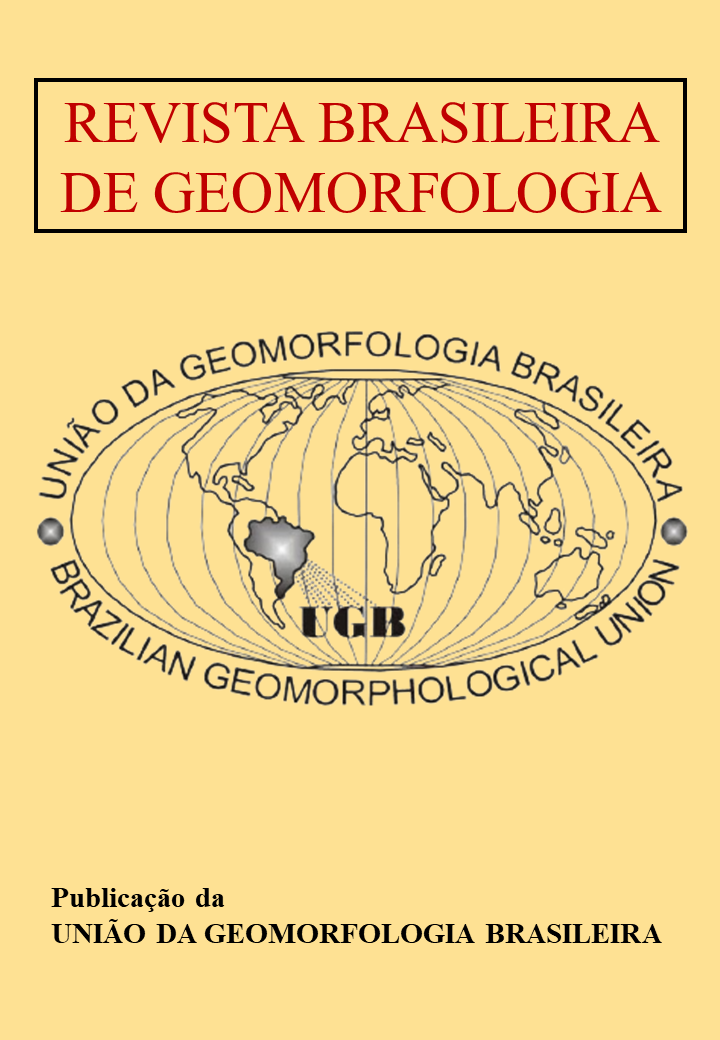The Study of Anthropogenic Disturbance on Geopedogenetic Process at the Lower Slope of Mt. Ungaran, Indonesia
DOI:
https://doi.org/10.20502/rbg.v23i3.2142Palavras-chave:
geopedogenetic, andesite mining, surface morphologyResumo
Volcanic rocks mining activity will undoubtedly remove vegetation cover and cause the physical environment changes. Revegetation effort as part of land rehabilitation program then often found many obstacles because it was mostly conducted without adequate knowledge of detailed morphology and soil characteristics at the post-mining area. This study investigates the geopedogenetic changes, including land surface morphology, recent geomorphic processes, and soil properties caused by andesite rocks exploitation at the northern flank of Mt. Ungaran, Central Java Province of Indonesia. A digital terrain model was firstly generated from small format aerial photography acquired by an unmanned aerial vehicle (UAV) to identify the surface morphology changes due to the mining. Soil observation on field and laboratory tests were conducted from samples at the affected and unaffected mining areas to analyze the changes in physicochemical properties. This research exhibits that the mining activities have altered a single 60 m convex hill into a complex land surface morphology consisting of the sloping zone, basins, and flat area. Human disturbance on the pedogenetic process at the mining area is in the form of parent material alteration that makes them return to the early stage of soil development and topsoil reduction that modifies its genetic horizons. In addition, the changes in surface morphology and the absence of vegetation cover right after the mining ends also triggered new geomorphic processes in the form of incision and deposition on slopes and basins respectively. The finer deposit layers then become a new parent material at the basin zone. Soil laboratory data demonstrate that the affected soils tend to have a high level of base saturation for more than 10%, but lower C-organic ca. 0.71% on Horizon A and 0.08% on Horizon B and N-total levels ca. 0.15% on Horizon A and 0.12% in Horizon B, which result in a less favorable environment for supporting vegetation growth. A precise surface morphology design, extra soil surface protection, and organic matter enhancement could be wise recommendations for land managers to control soil incision and support vegetation growth at the andesite post-mining area.
Downloads
Downloads
Publicado
Como Citar
Edição
Seção
Licença
Copyright (c) 2022 Revista Brasileira de Geomorfologia

Este trabalho está licenciado sob uma licença Creative Commons Attribution-NonCommercial 4.0 International License.
Autor(es) conservam os direitos de autor e concedem à revista o direito de primeira publicação, com o trabalho simultaneamente licenciado sob a Licença Creative Commons Attribution que permite a partilha do trabalho com reconhecimento da autoria e publicação inicial nesta revista.










